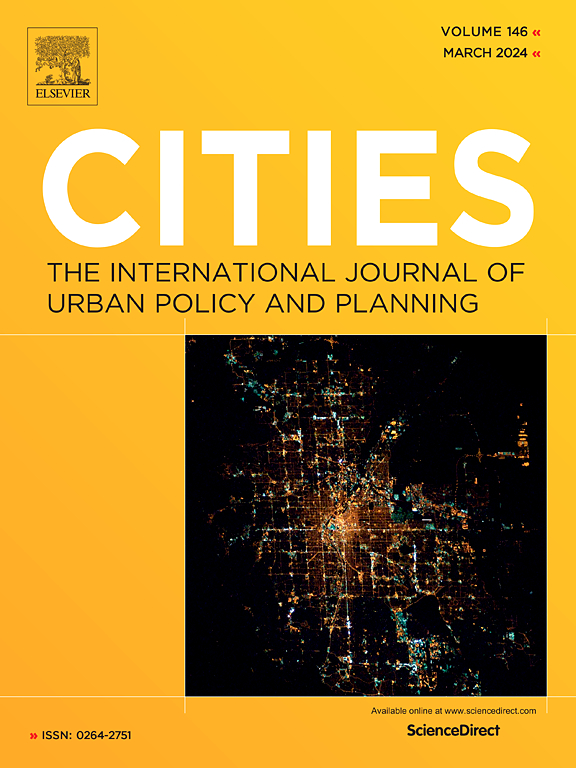Go with the flow: Residential mobility of internal migrants during intensive urban renewal in China
IF 6.6
1区 经济学
Q1 URBAN STUDIES
引用次数: 0
Abstract
As urbanization advances globally, many cities, including those in China, have entered the post-urbanization era, driving extensive urban renewal projects, particularly the demolition of urban villages. These urban villages, historically home to migrants, have provided affordable housing but are now being displaced by urban redevelopment. This study examines the residential histories of migrants in Fuzhou over a decade (2011−2022) and provides a spatial and temporal analysis of how urban renewal influences their housing trajectories. By integrating time-series data, government documents, and interviews, this research highlights that urban renewal has become the second most significant driver of residential mobility, after job changes, with a particularly strong impact on older migrants with lower education levels. The findings indicate that migrants primarily relocate between urban villages due to factors such as affordability, convenience, and established social networks, making their residential decisions driven more by necessity than by choice. These moves are often cyclical, as displaced migrants relocate to more peripheral urban villages that are subsequently targeted for demolition. The theoretical contribution of this study lies in its integration of spatial and temporal perspectives on residential mobility, providing a deeper understanding of how urban renewal reshapes the housing conditions and mobility patterns of migrants, particularly in rapidly urbanizing contexts.
随波逐流:中国密集城市更新过程中内部流动人口的居住流动性
随着全球城市化进程的推进,包括中国在内的许多城市都进入了后城市化时代,推动了大规模的城市更新项目,特别是城中村的拆除。这些城中村,历史上是移民的家园,提供了负担得起的住房,但现在正被城市重建所取代。本研究考察了福州市十多年来(2011 - 2022年)外来人口的居住历史,并对城市更新如何影响他们的住房轨迹进行了时空分析。通过整合时间序列数据、政府文件和访谈,本研究强调,城市更新已成为仅次于工作变动的第二大居民流动驱动因素,对受教育程度较低的老年移民的影响尤其强烈。研究结果表明,流动人口在城中村之间迁移主要是由于负担能力、便利性和已建立的社会网络等因素,使他们的居住决定更多地受到必要性而不是选择的驱动。这些迁移通常是周期性的,因为流离失所的移民搬迁到更外围的城中村,这些村随后成为拆迁的目标。本研究的理论贡献在于将住宅流动的时空视角结合起来,更深入地了解城市更新如何重塑移民的住房条件和流动模式,特别是在快速城市化的背景下。
本文章由计算机程序翻译,如有差异,请以英文原文为准。
求助全文
约1分钟内获得全文
求助全文
来源期刊

Cities
URBAN STUDIES-
CiteScore
11.20
自引率
9.00%
发文量
517
期刊介绍:
Cities offers a comprehensive range of articles on all aspects of urban policy. It provides an international and interdisciplinary platform for the exchange of ideas and information between urban planners and policy makers from national and local government, non-government organizations, academia and consultancy. The primary aims of the journal are to analyse and assess past and present urban development and management as a reflection of effective, ineffective and non-existent planning policies; and the promotion of the implementation of appropriate urban policies in both the developed and the developing world.
 求助内容:
求助内容: 应助结果提醒方式:
应助结果提醒方式:


